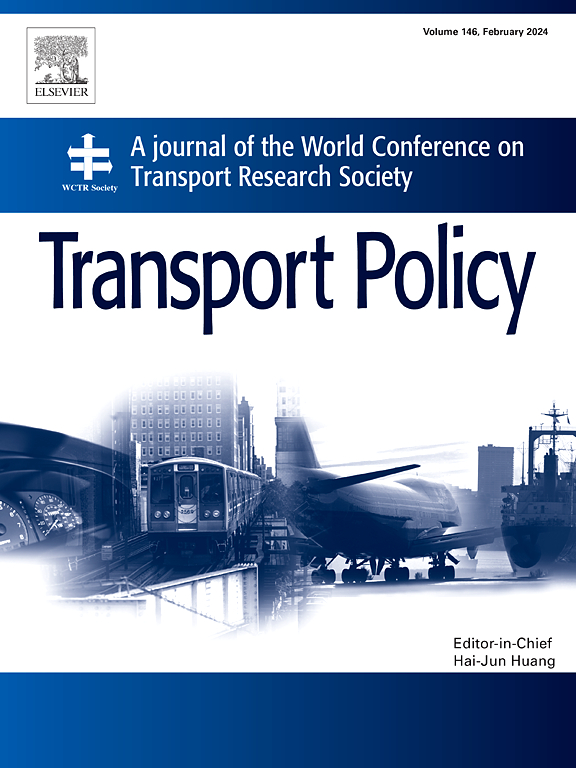Impacts of subsidy efficiency on bus electrification: A participatory system dynamic modeling
IF 6.3
2区 工程技术
Q1 ECONOMICS
引用次数: 0
Abstract
This study explores the effectiveness of government subsidies in promoting the adoption of Battery Electric Buses (BEBs) and mitigating CO2 emissions to illustrate how political and contextual factors interact in this implementation. Case studies from Wales and Brazil were chosen to demonstrate results in different national contexts and identify differences and similarities in electrification initiatives. The system dynamics (SD) models are established through group model building (GMB) involving interdisciplinary workshops conducted with local researchers from both countries. Causal Loop Diagrams (CLDs) were employed to describe the system in terms of causal connections and mutual influences. The simulated results reveals that the static subsidy efficiency in 2030 for Brazil and Wales correspond to 43 % and 64 %, respectively. The emissions avoided per BEBs unit corresponds to approximately 129.848 tons CO2/year and 109.310 tones CO2/year, respectively. The originality of this research results from the development of flexible models as a decision tool for the electrification of public transport. Therefore, the findings are useful to both researchers and policymakers involved in crafting action plans of bus transit.
补贴效率对公共汽车电气化的影响:参与式系统动态模型
本研究探讨了政府补贴在促进电池电动公交车(beb)的采用和减少二氧化碳排放方面的有效性,以说明政治和背景因素如何在这一实施中相互作用。选择来自威尔士和巴西的案例研究来展示不同国家背景下的结果,并确定电气化举措的异同。系统动力学(SD)模型是通过小组模型建立(GMB)建立的,其中包括与两国本地研究人员举办的跨学科研讨会。因果循环图(CLDs)被用来描述系统的因果关系和相互影响。模拟结果显示,2030年巴西和威尔士的静态补贴效率分别为43%和64%。每个beb单位所避免的排放量分别约为129.848吨二氧化碳/年和109.310吨二氧化碳/年。本研究的独创性源于灵活模型作为公共交通电气化决策工具的发展。因此,研究结果对参与制定公共交通行动计划的研究人员和政策制定者都很有用。
本文章由计算机程序翻译,如有差异,请以英文原文为准。
求助全文
约1分钟内获得全文
求助全文
来源期刊

Transport Policy
Multiple-
CiteScore
12.10
自引率
10.30%
发文量
282
期刊介绍:
Transport Policy is an international journal aimed at bridging the gap between theory and practice in transport. Its subject areas reflect the concerns of policymakers in government, industry, voluntary organisations and the public at large, providing independent, original and rigorous analysis to understand how policy decisions have been taken, monitor their effects, and suggest how they may be improved. The journal treats the transport sector comprehensively, and in the context of other sectors including energy, housing, industry and planning. All modes are covered: land, sea and air; road and rail; public and private; motorised and non-motorised; passenger and freight.
 求助内容:
求助内容: 应助结果提醒方式:
应助结果提醒方式:


